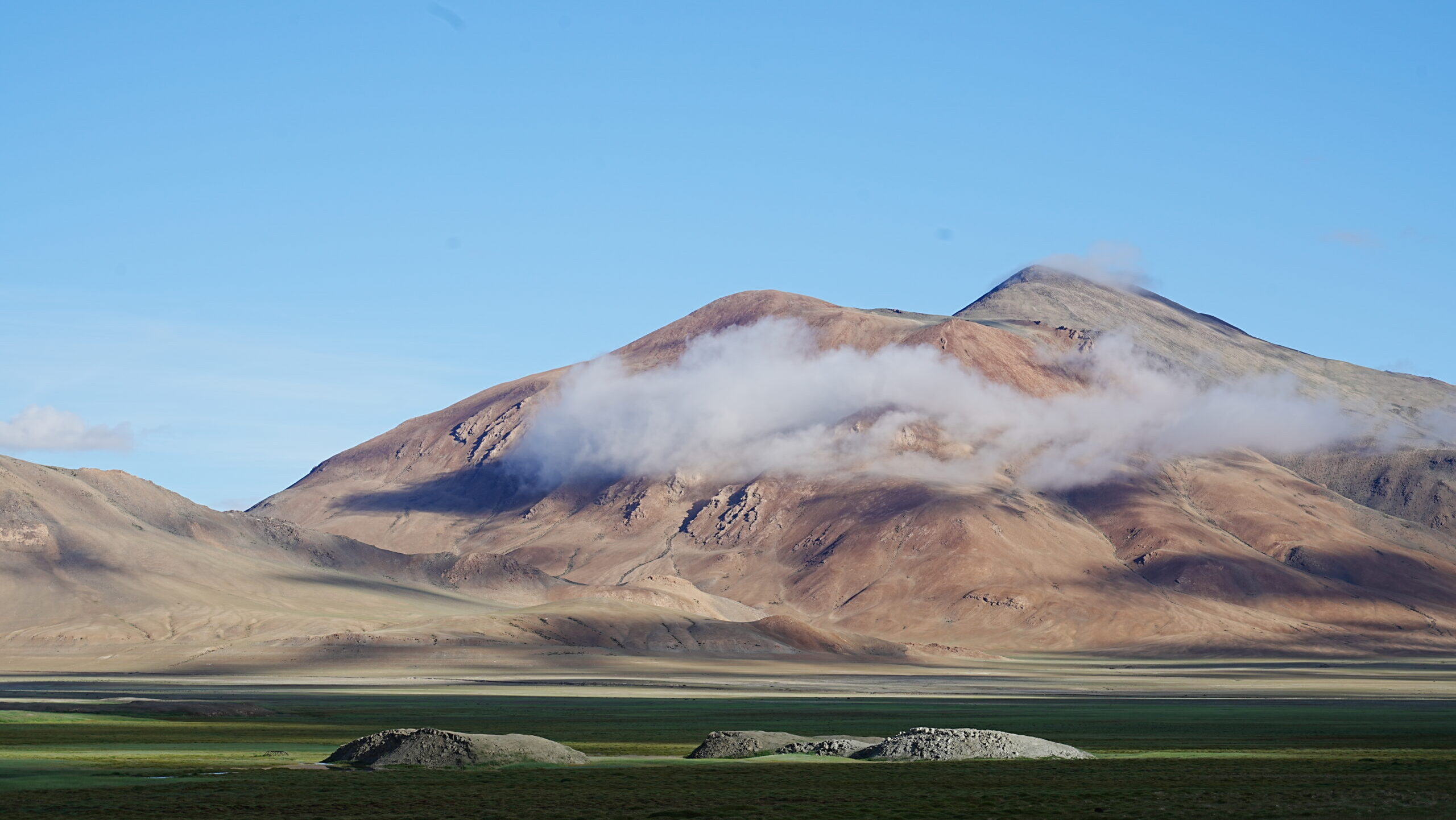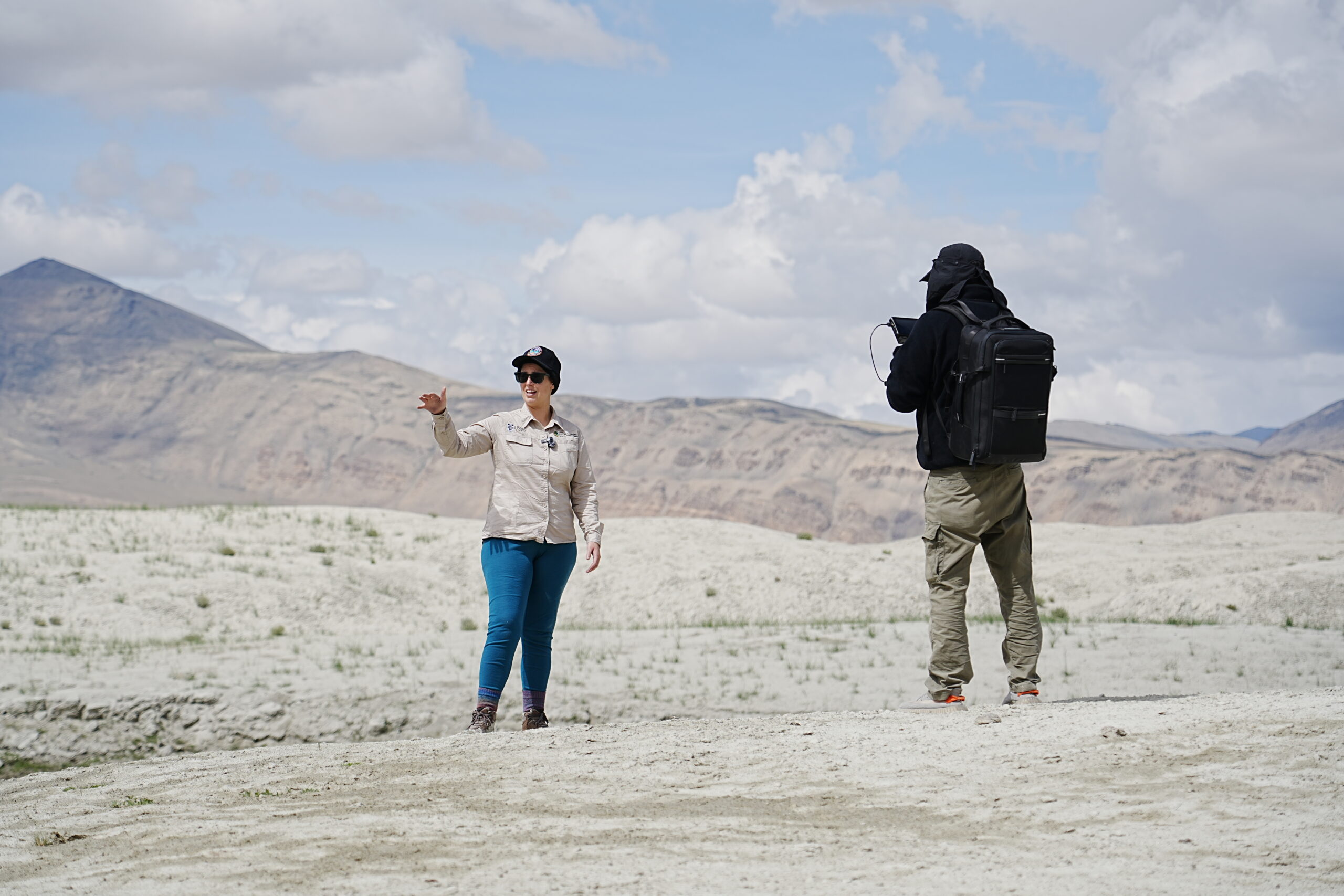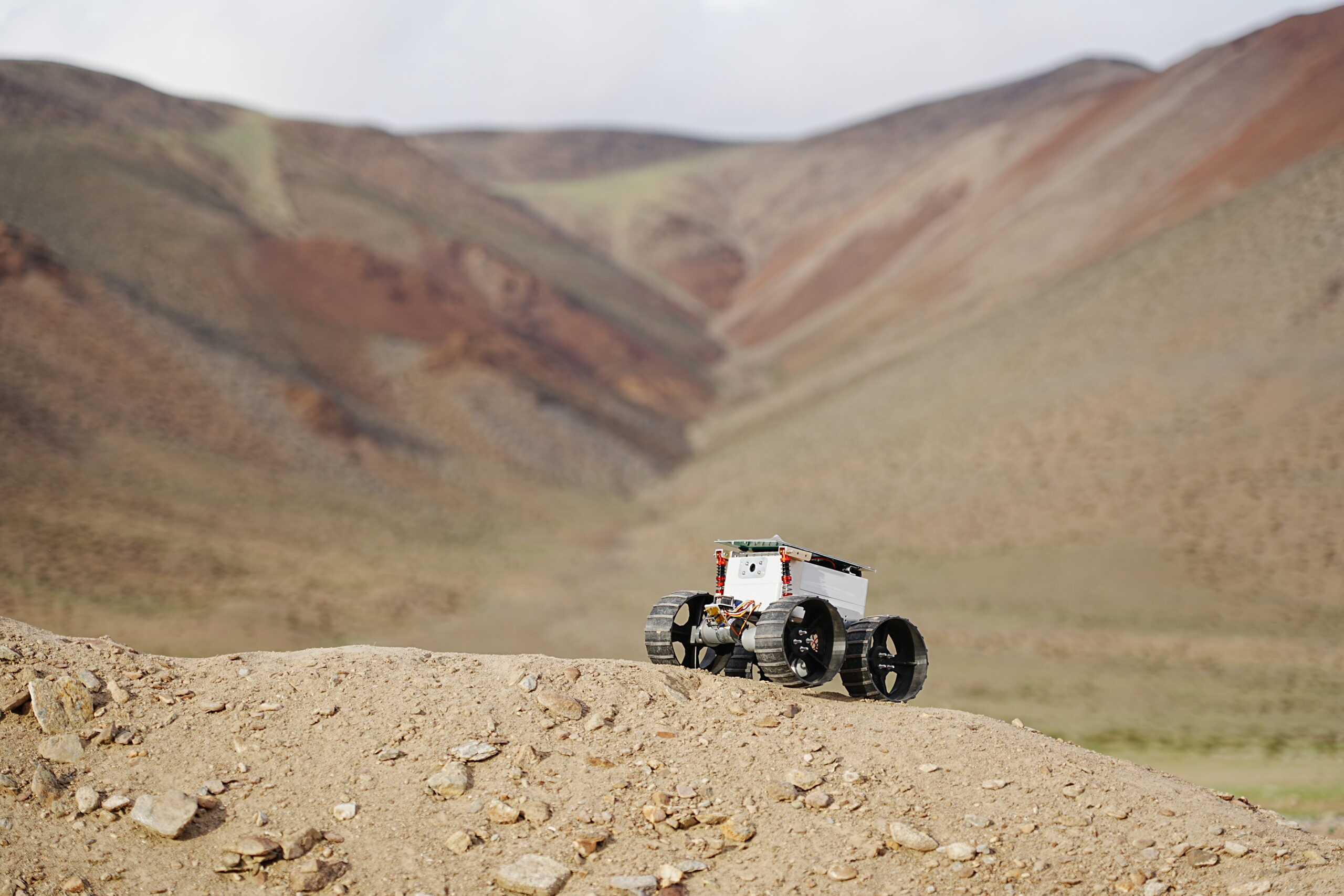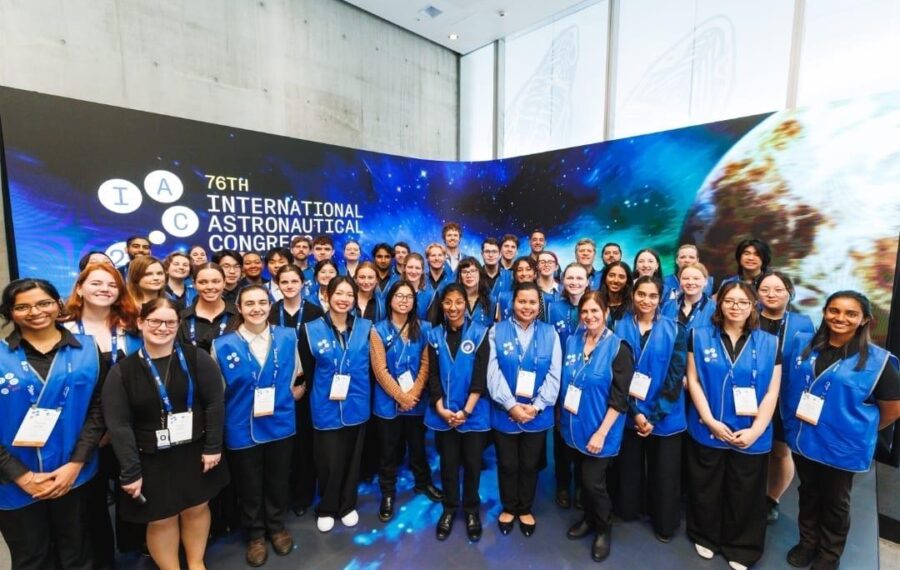
Breathing thin mountain air beneath a glaring sun, a multinational group of scientists convened in Ladakh for the July 2025 Spaceward Bound India field programme. Packing rock hammer, binoculars, and wildlife guide, SSP coordinator Thomas joined the programme as part of a contingent from Mars Society Australia. This was an opportunity to observe and learn from experts in planetary exploration doing what they do best.
Organised by Protoplanet, this iteration of Spaceward Bound facilitated scientific investigation of Mars analogue environments in and around Tso Kar, a salt lake system perched at 4500 m above sea level. The area’s physical features, which include glacially modified terrain, ancient lake shores, and permafrost landscape, as well as its environmental characteristics, which include an arid climate, extremes of temperature, low atmospheric pressure, and high solar irradiance, closely resemble conditions believed to have existed on an ancient Mars (and in several instances mirror aspects of Mars as it is today). Only by first studying Earth-based analogue environments – such as the Tso Kar system – can we effectively hypothesise on and ultimately explain the geological evolution of Martian landscapes.

Ancient lake sediment mounds amongst the marsh-meadow. Excavating below a metre or so exposed the permafrost layer.

Putative solifluction lobes above Tso Kar’s eastern shore. Similar features have been sighted on Mars, probably also caused by solifluction, hinting at past freeze-thaw cycles.
Tso Kar’s analogue status also makes it a useful testbed for refining fieldwork protocols and trialling scientific instrumentation prior to robotic and human space exploration missions. Here, we are guided by a key question: if life did indeed exist on Mars, how and where should we go looking for the evidence?
The collective effort of the SB’25 scientists delivered a short, sharp and busy field campaign, which saw the various teams returning to their home institutions loaded with data, samples, and newfound experience working in an unusual and taxing environment. A field programme as multi-faceted and intensive as SB’25 is a tricky thing to coordinate, yet Protoplanet and the extended organising team were more than equal to the logistical challenge, and it was very useful to witness their approach.

Geologist Clare Fletcher gives a piece to camera during permafrost excavations.

Robotics technician Steve Hobbs scales the exposed slopes – not a straightforward feat at 4600 m a.s.l. and around 570 hPa atmospheric pressure!
To list some campaign highlights:
- sediments, salts and brine were sampled for microbial, chemical and spectral analysis;
- notable terrain features and landscape processes were added to Tso-Kar’s growing catalogue of Mars-like geology;
- hours were spent excavating ancient lake sediment mounds to expose the permafrost layer;
- multispectral imagery was collected to identify and differentiate rock and vegetation types;
- a bioaerosol sampling instrument was tested against the low-pressure atmosphere; and
- a marvellous rover BitsnBytes – built by MSA member Steven Hobbs – was put to the test in a series of (successful!) mobility trials among the sun-seared rocky slopes.
(If you read any of that and thought ‘this is what I want to be doing’, note well that studies in planetary science or astrobiology can lead you here… and much further. The academic pathways into these fields are extremely diverse, with students entering via almost every branch of the natural sciences, and often segueing from technical professions in robotics, electrical engineering, and information & communications technology. One of the SB’25 lead organisers is a visual artist. In essence, if your ultimate aim is to contribute to planetary science, astrobiology and space exploration, you need only follow your strengths and interests, and you will find yourself valuable. Visit our resources or reach out to us for ideas on where to get started.)

BitsnBytes rover during terrain trials.
HOPE
The final day at Tso Kar included a visit to the Himalayan Outpost for Planetary Exploration (HOPE), a Mars analogue station developed by Protoplanet, with founding contributions from the Mars Society (USA and Australian chapters), ISRO, and Ladakh Autonomous Hill Development Council. At the time of visit, HOPE was on the cusp of completion, and in the few weeks since has entered commission for a pilot study by ISRO’s Human Space Flight Centre. This is a massive achievement for Protoplanet and its collaborators – yet another indicator of the Indian nation’s growing appetite for advancing human space exploration. The remainder of HOPE’s inaugural summer season will serve as a performance appraisal for this analogue station concept. Initial indicators look very positive and SSP will be following closely…
Beneath it all, the next desert beckons.
Featured image: Fresh snow above Thukje, late July 2025. Exposed to a combination of dry air and harsh sun, it vanished the very next day.



